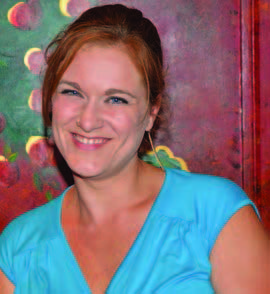 Teacher Lyndsey Schlax of the Ruth Asawa San Francisco School of the Arts is teaching the nation’s first on-site high school LGBT course, according to district officials. In this column, students from her class will be anonymously sharing with the San Francisco Bay Times their thoughts about related matters, and what they are learning in the groundbreaking course, “LGBTQ Studies.”
Teacher Lyndsey Schlax of the Ruth Asawa San Francisco School of the Arts is teaching the nation’s first on-site high school LGBT course, according to district officials. In this column, students from her class will be anonymously sharing with the San Francisco Bay Times their thoughts about related matters, and what they are learning in the groundbreaking course, “LGBTQ Studies.”
Student- 12th Grade
The Cold War is especially interesting to me, as I have a soft spot for scandals, backroom plots, and Russian military uniforms. Every United States History textbook in America has at least one chapter on the Cold War in which the Red Scare is discussed for a significant amount of the chapter. Never once, though, amidst the purging of communists from the U.S. government, is the Lavender Scare mentioned.
I had never heard of the Lavender Scare until this year when we learned about it in LGBTQ Studies. During the time of the Red Scare, a similar purge of gays from government offices and jobs was taking place in Washington D.C. Just as Senator Joseph McCarthy had incited the communist paranoia, the government was now aiming its forces at a new target. They claimed that gay people were even more dangerous to the nation than communists, since they could be blackmailed into divulging state secrets in order to keep their sexuality a secret. Thus, President Eisenhower issued an executive order allowinganyone “proven” to be gay to be removed from his or her government job. Thousands and thousands of people lost their jobs and had their careers ruined.
I was really surprised and upset to learn that such a monumental breach of the country’s Constitution could slip under the radar in history classes for so long in this day and age. It is understandable that there may not be enough time to cover everything in the average U.S. History class, but this omission is unacceptable.
Every history class I have ever been in, at some point, made mention of how a minority group was affected by a well known historical event; the Native Americans and the impact Manifest Destiny had on them is one example. I see no reason for gay people not to be spoken about when discussing the social climate of the Cold War. The Lavender Scare is a microcosm of the cultural shift from the forties to the fifties, and could be a great tool for examination of social differences between the U.S. and the U.S.S.R.
Student- 12th Grade
It’s entirely possible that this is the fourth time I’ve learned about McCarthyism, the Red Scare, or the Hollywood Ten. But this round, I’ve learned about something totally new: the Lavender Scare. Through the curriculum of my LGBTQ studies class, I have had the opportunity to learn about historical events, and rather large ones at that, which I have never even heard mentioned in any other history class I’ve taken.
I find it bizarre (but on the other hand, not that bizarre, unfortunately) that entire chapters of American history, and ones that seem to me rather significant, have been redacted from my education simply for involving gays. The Lavender Scare, the raids of WWII, and aspects of the Harlem Renaissance seem to have all been carefully neutralized to avoid “offending” anyone. But is silence really the truth?
The Lavender Scare is an essential part of U.S. History; the ideas that arose from that conflict are ingrained in the American psyche even today. Many people don’t know that the widely accepted concept that communists were “of weak morality” and “dangerous” was also associated with homosexuality. Gays were persecuted as widely and mercilessly as the so-called communists. The acceptance of this connotation between “bad” and “gay” still affects us as a country today. The notion that anything “other” or unfamiliar, nonconforming to a strict standard we employ, still stops us.
During the Lavender Scare, hundreds of gay, or suspected to be gay, government employees were sought out and fired from their jobs for these reasons. Senator McCarthy’s “list of traitors” was mainly gay people on federal payroll, whom he believed to be a threat because of their secret, and were therefore supposedly liable to be blackmailed by Russian spies or communists. And this, what I consider to be a decidedly large-scale operation, has never been mentioned to me in any other class.
The study of history through an LGBTQ lens, the focus of our education in this class, is becoming more and more important to me as we go along. Learning about these events and taking on new perspectives of seemingly well-known history greatly supplements my view of our world and the incidents that have shaped it.
For more information about the Ruth Asawa San Francisco School of the Arts, please visit http://www.sfsota.org/
Recent Comments